-
 Bitcoin
Bitcoin $106,754.6083
1.33% -
 Ethereum
Ethereum $2,625.8249
3.80% -
 Tether USDt
Tether USDt $1.0001
-0.03% -
 XRP
XRP $2.1891
1.67% -
 BNB
BNB $654.5220
0.66% -
 Solana
Solana $156.9428
7.28% -
 USDC
USDC $0.9998
0.00% -
 Dogecoin
Dogecoin $0.1780
1.14% -
 TRON
TRON $0.2706
-0.16% -
 Cardano
Cardano $0.6470
2.77% -
 Hyperliquid
Hyperliquid $44.6467
10.24% -
 Sui
Sui $3.1128
3.86% -
 Bitcoin Cash
Bitcoin Cash $455.7646
3.00% -
 Chainlink
Chainlink $13.6858
4.08% -
 UNUS SED LEO
UNUS SED LEO $9.2682
0.21% -
 Avalanche
Avalanche $19.7433
3.79% -
 Stellar
Stellar $0.2616
1.64% -
 Toncoin
Toncoin $3.0222
2.19% -
 Shiba Inu
Shiba Inu $0.0...01220
1.49% -
 Hedera
Hedera $0.1580
2.75% -
 Litecoin
Litecoin $87.4964
2.29% -
 Polkadot
Polkadot $3.8958
3.05% -
 Ethena USDe
Ethena USDe $1.0000
-0.04% -
 Monero
Monero $317.2263
0.26% -
 Bitget Token
Bitget Token $4.5985
1.68% -
 Dai
Dai $0.9999
0.00% -
 Pepe
Pepe $0.0...01140
2.44% -
 Uniswap
Uniswap $7.6065
5.29% -
 Pi
Pi $0.6042
-2.00% -
 Aave
Aave $289.6343
6.02%
Is the bottoming out when the trading volume shrinks to the ground? How to confirm the reversal signal?
"Low trading volume in crypto often signals market bottoms, but confirmation through price action, RSI, and volume surges is essential for reliable reversal identification."
Jun 19, 2025 at 03:07 pm
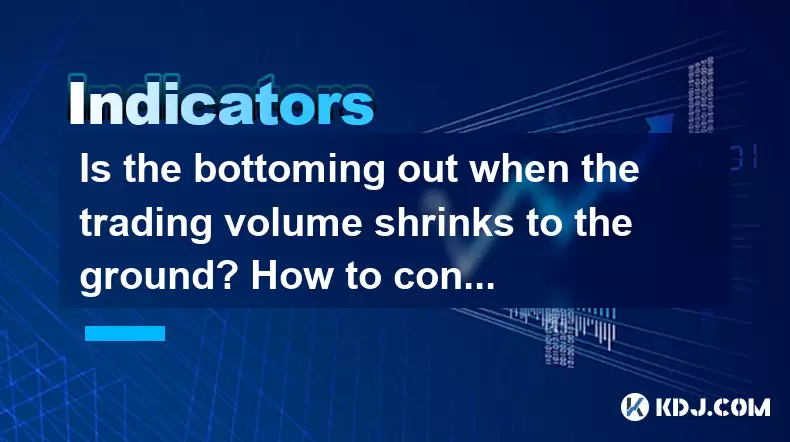
Understanding the Relationship Between Trading Volume and Market Bottoms
In the cryptocurrency market, trading volume is often viewed as a key indicator of market sentiment. When prices fall and volume shrinks to near-zero levels, many traders speculate that the asset may be reaching a bottom. This phenomenon typically reflects extreme disinterest or capitulation among investors. However, it's crucial to understand that low volume alone isn't sufficient to confirm a reversal. Instead, it should be used in conjunction with other technical tools and price action patterns.
One notable pattern associated with shrinking volume at market bottoms is called a "volume dry-up." This occurs when selling pressure diminishes significantly, suggesting that most holders have already exited their positions. At this stage, there are fewer sellers left to push the price lower, which can set the stage for a potential rebound.
Key Indicators That Help Confirm a Reversal Signal
While declining volume might hint at a possible bottom formation, confirming a reversal requires additional signals. Here are several key indicators and patterns to monitor:
- Price Action Patterns: Look for signs such as bullish engulfing candles, hammer formations, or morning star patterns that suggest buyers are stepping in.
- Moving Averages Crossovers: A golden cross, where the 50-day moving average crosses above the 200-day moving average, can indicate a shift from bearish to bullish momentum.
- Relative Strength Index (RSI): If RSI reaches oversold territory (below 30) and starts to rise while volume begins to increase, it could signal an imminent reversal.
- Volume Surges: After a prolonged period of low volume, a sudden spike in trading activity—especially on the upside—can act as confirmation that institutional or retail buyers are entering the market.
These signals, when aligned, offer stronger evidence that a reversal is underway rather than just a temporary bounce within a downtrend.
Analyzing Historical Examples in Cryptocurrency Markets
Historically, Bitcoin and other major cryptocurrencies have exhibited patterns where volume dried up before significant reversals. For instance, during the 2018–2019 bear market, Bitcoin saw multiple weeks of extremely low trading volume, especially around the December 2018 lows. However, it wasn’t until early 2019 when volume began to pick up alongside rising prices that a sustainable uptrend emerged.
Another example occurred in mid-2022 during the crypto crash, where Ethereum and altcoins experienced extreme volume contraction. The eventual reversal didn't occur immediately after the volume drop but followed a series of bullish candlesticks accompanied by increasing volume.
These historical cases emphasize the importance of waiting for confirmation signals rather than acting solely on volume contractions.
How to Use On-Balance Volume (OBV) to Spot Accumulation
On-Balance Volume (OBV) is a powerful tool that helps traders identify whether an asset is being accumulated or distributed. In a downtrend, if OBV starts to rise despite falling prices, it may indicate smart money accumulation.
To calculate OBV:
- Add the day’s volume to the previous OBV value if today’s closing price is higher than yesterday’s close.
- Subtract the day’s volume from the previous OBV if today’s close is lower.
- Keep OBV unchanged if the close remains the same.
When using OBV in a bottoming scenario:
- Watch for divergences between price and OBV. For example, if price makes a new low but OBV does not, this could signal underlying strength.
- Combine OBV with support levels and candlestick patterns for more accurate readings.
This technique allows traders to gauge whether the decline is still driven by selling pressure or if buying interest is beginning to build beneath the surface.
Practical Steps to Confirm a Reversal in Real Time
Confirming a reversal in real time requires discipline and a structured approach. Here’s how you can practically apply these concepts:
- Monitor Daily Volume Trends: Use platforms like TradingView or CoinMarketCap to track daily volume changes across exchanges. Look for consistent declines followed by a sudden surge.
- Overlay Key Technical Levels: Draw horizontal support zones and Fibonacci retracement levels. If price finds support at these levels along with rising volume, it strengthens the reversal case.
- Use Multiple Timeframes: Analyze both daily and weekly charts. A reversal on the daily chart supported by a weekly bullish pattern increases confidence.
- Check Order Book Depth: Observe the order book on major exchanges. An increase in buy walls forming at key support levels can indicate institutional interest.
- Track On-Chain Metrics: Tools like Glassnode or CryptoQuant provide insights into exchange inflows/outflows and whale movements. A reduction in sell pressure on-chain can precede a price reversal.
By integrating these steps into your analysis routine, you can better assess whether a bottom is forming or if the downtrend is likely to continue.
Frequently Asked Questions
Q: Can a cryptocurrency continue to fall even after volume drops significantly?
Yes, a sharp drop in volume doesn’t guarantee a reversal. In some cases, especially during macroeconomic downturns or regulatory crackdowns, prices can keep falling even with minimal volume due to sustained negative sentiment.
Q: Is it reliable to trade based only on volume patterns?
No single indicator is foolproof. Volume patterns should always be combined with price action, technical indicators, and on-chain data for more robust decision-making.
Q: What time frame should I focus on when analyzing volume for reversals?
It’s best to analyze both daily and weekly time frames. Shorter time frames like 4-hour or 1-hour charts can give early signals, but they are more prone to false signals compared to longer-term views.
Q: How long does a typical volume dry-up last before a reversal occurs?
There's no fixed duration. Some assets may bottom out within days of volume contraction, while others may take months. Patience and multi-indicator confirmation are essential.
Disclaimer:info@kdj.com
The information provided is not trading advice. kdj.com does not assume any responsibility for any investments made based on the information provided in this article. Cryptocurrencies are highly volatile and it is highly recommended that you invest with caution after thorough research!
If you believe that the content used on this website infringes your copyright, please contact us immediately (info@kdj.com) and we will delete it promptly.
- Filecoin, Secure Storage, and Avalanche Enterprises: A New Era of Blockchain Collaboration
- 2025-06-20 14:45:13
- SEI Price Surge: Decoding the Reasons Behind the Rise
- 2025-06-20 14:25:12
- Cryptos for the Long Haul: Early Investors' Edge in 2025
- 2025-06-20 14:25:12
- Bitcoin Price in June 2025: Riding the $100K Wave?
- 2025-06-20 14:45:13
- Tether, Stablecoins, and Public Offerings: A New York Perspective
- 2025-06-20 15:05:13
- XRP Price Consolidates as Solana Meme Coin Snorter Token Gains Traction
- 2025-06-20 15:25:12
Related knowledge

Is it a real drop when KDJ crosses but the trading volume shrinks?
Jun 20,2025 at 03:49pm
Understanding KDJ and Its Role in Cryptocurrency TradingIn the realm of cryptocurrency trading, technical analysis plays a crucial role in identifying potential price movements. The KDJ indicator, also known as the stochastic oscillator with a J line added for momentum confirmation, is widely used by traders to gauge overbought or oversold conditions. I...
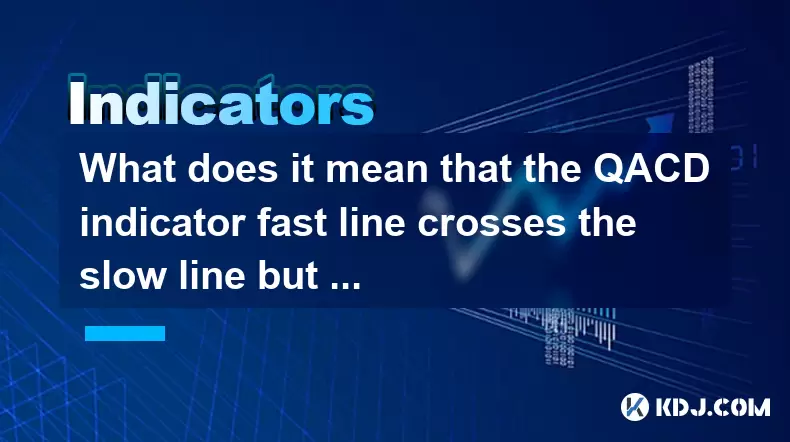
What does it mean that the QACD indicator fast line crosses the slow line but does not increase in volume?
Jun 20,2025 at 12:22pm
Understanding the QACD Indicator and Its ComponentsThe QACD (Quantitative Accumulation Convergence Divergence) indicator is a technical analysis tool used by traders to identify potential trend reversals, momentum shifts, and entry or exit points in cryptocurrency markets. It consists of two primary lines: the fast line, which reacts more quickly to pri...
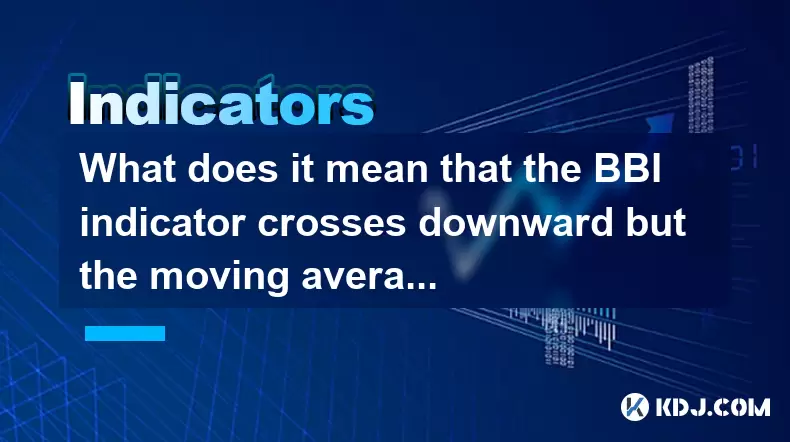
What does it mean that the BBI indicator crosses downward but the moving average does not cross?
Jun 20,2025 at 03:07pm
Understanding the Role of Blockchain in Cryptocurrency TransactionsBlockchain technology is the foundational infrastructure behind most cryptocurrencies. It serves as a decentralized, distributed ledger that records all transactions across a network of computers. This ensures transparency and eliminates the need for a central authority like a bank. Each...
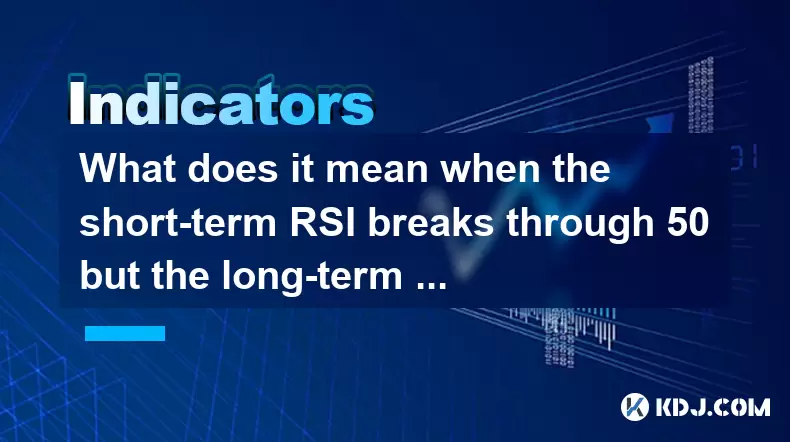
What does it mean when the short-term RSI breaks through 50 but the long-term RSI does not move in the RSI indicator?
Jun 20,2025 at 10:42am
Understanding the RSI Indicator and Its Dual-Term ApplicationThe Relative Strength Index (RSI) is a widely used momentum oscillator in technical analysis, primarily for identifying overbought or oversold conditions in an asset’s price movement. It typically operates on a scale from 0 to 100, with levels above 70 considered overbought and below 30 consid...
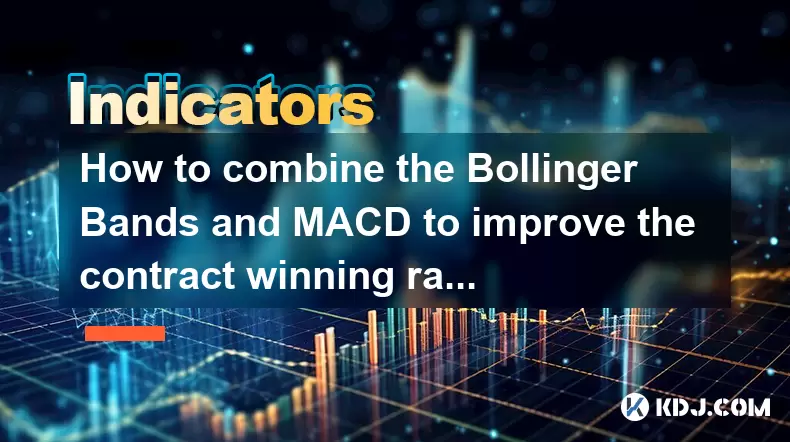
How to combine the Bollinger Bands and MACD to improve the contract winning rate?
Jun 19,2025 at 06:35pm
Understanding Bollinger Bands and MACD IndicatorsTo effectively combine Bollinger Bands and the MACD (Moving Average Convergence Divergence), it's essential to first understand what each indicator represents. Bollinger Bands consist of a middle moving average line and two outer bands that adjust based on market volatility. When prices move toward the up...
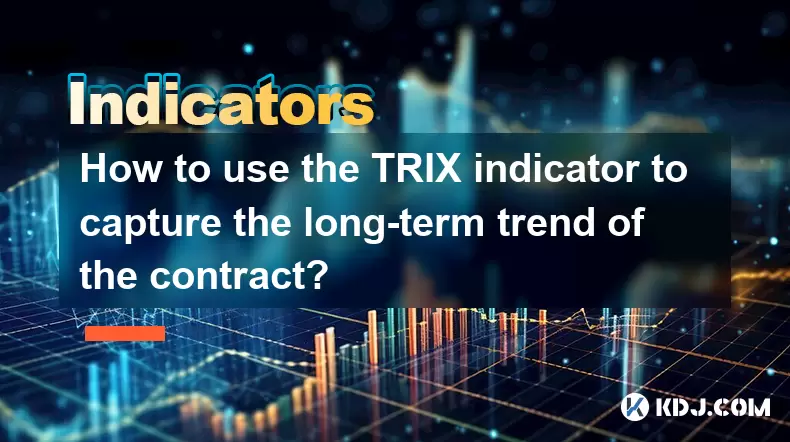
How to use the TRIX indicator to capture the long-term trend of the contract?
Jun 20,2025 at 09:14am
What Is the TRIX Indicator?The TRIX (Triple Exponential Average) indicator is a momentum oscillator used to identify oversold and overbought conditions, as well as potential trend reversals in financial markets. It is calculated by applying a triple exponential moving average to price data and then taking the percentage rate of change of that smoothed v...

Is it a real drop when KDJ crosses but the trading volume shrinks?
Jun 20,2025 at 03:49pm
Understanding KDJ and Its Role in Cryptocurrency TradingIn the realm of cryptocurrency trading, technical analysis plays a crucial role in identifying potential price movements. The KDJ indicator, also known as the stochastic oscillator with a J line added for momentum confirmation, is widely used by traders to gauge overbought or oversold conditions. I...

What does it mean that the QACD indicator fast line crosses the slow line but does not increase in volume?
Jun 20,2025 at 12:22pm
Understanding the QACD Indicator and Its ComponentsThe QACD (Quantitative Accumulation Convergence Divergence) indicator is a technical analysis tool used by traders to identify potential trend reversals, momentum shifts, and entry or exit points in cryptocurrency markets. It consists of two primary lines: the fast line, which reacts more quickly to pri...

What does it mean that the BBI indicator crosses downward but the moving average does not cross?
Jun 20,2025 at 03:07pm
Understanding the Role of Blockchain in Cryptocurrency TransactionsBlockchain technology is the foundational infrastructure behind most cryptocurrencies. It serves as a decentralized, distributed ledger that records all transactions across a network of computers. This ensures transparency and eliminates the need for a central authority like a bank. Each...

What does it mean when the short-term RSI breaks through 50 but the long-term RSI does not move in the RSI indicator?
Jun 20,2025 at 10:42am
Understanding the RSI Indicator and Its Dual-Term ApplicationThe Relative Strength Index (RSI) is a widely used momentum oscillator in technical analysis, primarily for identifying overbought or oversold conditions in an asset’s price movement. It typically operates on a scale from 0 to 100, with levels above 70 considered overbought and below 30 consid...

How to combine the Bollinger Bands and MACD to improve the contract winning rate?
Jun 19,2025 at 06:35pm
Understanding Bollinger Bands and MACD IndicatorsTo effectively combine Bollinger Bands and the MACD (Moving Average Convergence Divergence), it's essential to first understand what each indicator represents. Bollinger Bands consist of a middle moving average line and two outer bands that adjust based on market volatility. When prices move toward the up...

How to use the TRIX indicator to capture the long-term trend of the contract?
Jun 20,2025 at 09:14am
What Is the TRIX Indicator?The TRIX (Triple Exponential Average) indicator is a momentum oscillator used to identify oversold and overbought conditions, as well as potential trend reversals in financial markets. It is calculated by applying a triple exponential moving average to price data and then taking the percentage rate of change of that smoothed v...
See all articles

























































































